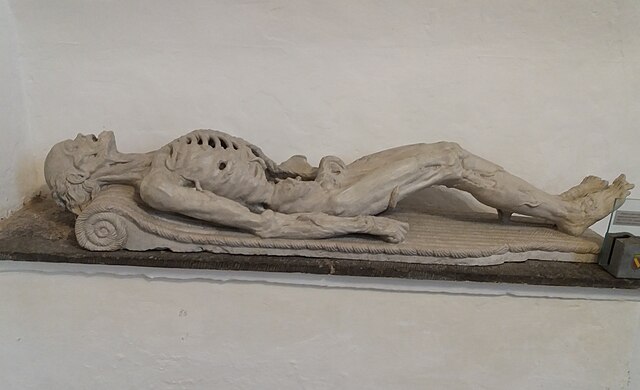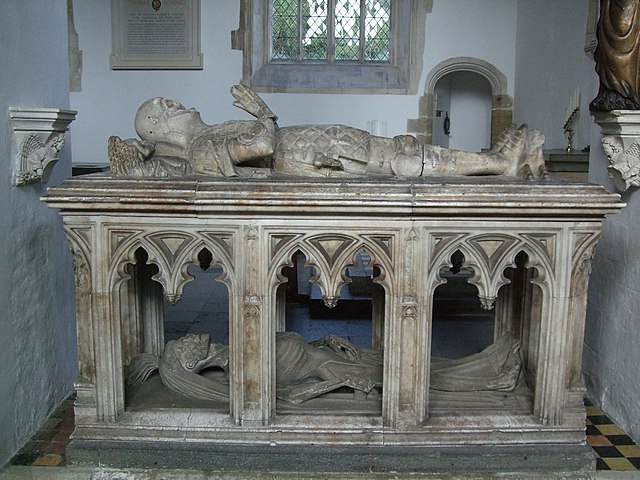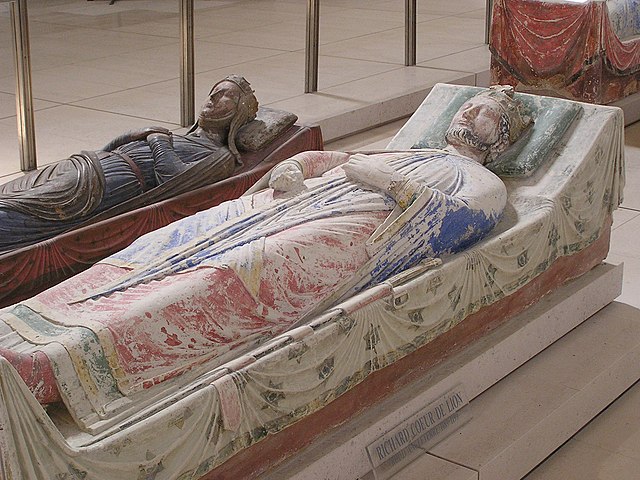A cadaver monument or transi is a type of funerary monument to a deceased person, featuring a sculpted tomb effigy of a skeleton, or of an emaciated or decomposing dead body, with closed eyes. It was particularly characteristic of the Late Middle Ages when they were designed to remind viewers of the transience and vanity of mortal life, and the eternity and desirability of the Christian after-life. The format is in stark contrast to gisants, which are always recumbent, in full dress, with open eyes and hands clasped and raised in prayer.
Tomb effigy in the mausoleum of the Lords of Boussu, Boussu Castle, Belgium
Cadaver Tomb of Guillaume de Harsigny. Musée d'art et d'archéologie de Laon, France
"L'homme aux moulons" (man eaten by worms), a 16th-century cadaver monument in Boussu, Belgium
Cadaver monument of John Fitzalan, 7th Earl of Arundel (died 1435), Fitzalan Chapel, Arundel Castle, West Sussex, England
A tomb effigy is a sculpted effigy of a deceased person usually shown lying recumbent on a rectangular slab, presented in full ceremonious dress or wrapped in a shroud, and shown either dying or shortly after death. Although such funerary and commemorative reliefs were first developed in Ancient Egyptian and Etruscan cultures, they appear most numerously in Western Europe tombs from the later 11th century, in a style that continued in use through the Renaissance and early modern period, and are still sometimes used. They typically represent the deceased in a state of "eternal repose", with hands folded in prayer, lying on a pillow, awaiting resurrection. A husband and wife may be depicted lying side by side.
Double tomb of Richard I of England (Richard the Lionheart) and Isabella of Angoulême. Fontevraud Abbey, Anjou, France
Effigies of Henry II of France and Catherine de' Medici, c. 1561–1573. Basilica of Saint-Denis, France
Limestone Ka statue of Djoser from his pyramid serdab. 27th century BC
Coffin of Neskhons, c. 945-715 BC, Cleveland Museum of Art, Ohio








